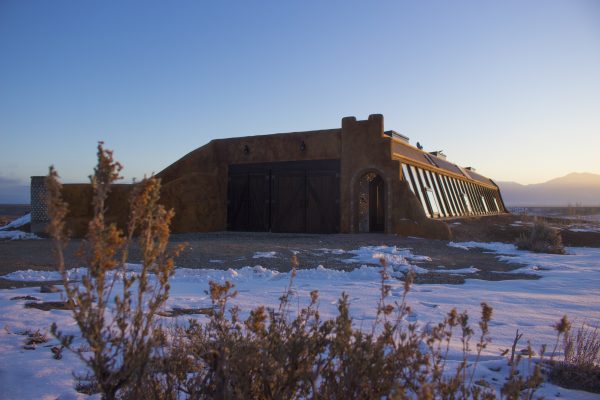

Welcome to the Earthship
It’s the beginning of December and there is a deep chill in the air.
While it has been an unusually warm year with low precipitation in the Taos region, right now there is snow on the ground and the below-freezing air bites at your face.
After spending most of the day in a well-heated car, the cold felt paralyzing when my girlfriend and I made our way to check in at the Earthship Biotecture Visitor Center.
I was checking into their newest model, the Picuris Earthship, named after the nearby Picuris Pueblo, which like the rest of the Earthships in the community was devoid of a heating system inside.
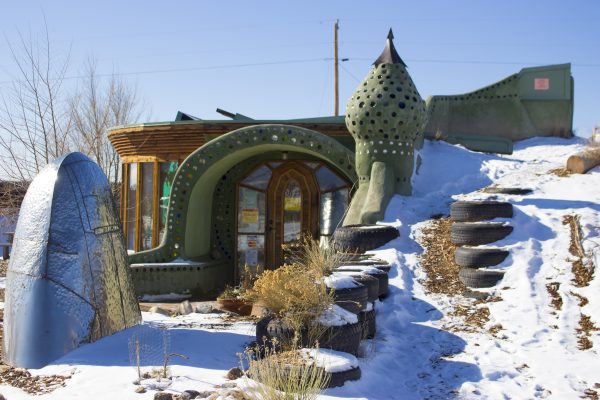
Earthships are not your traditional house. They do not have power lines connecting them to the outside power grid. The water isn’t piped in from a distant facility and the waste water isn’t well, wasted.
The Earthship community, or Greater World Community as it is formally called, is just outside of Taos, New Mexico.
This “experimental” community is the work of architect Michael Reynolds who has pushed the envelope on sustainable living.
It is home to permanent residents as well as travelers who can rent an Earthship and experience what it’s like to live off the energy of the sun.
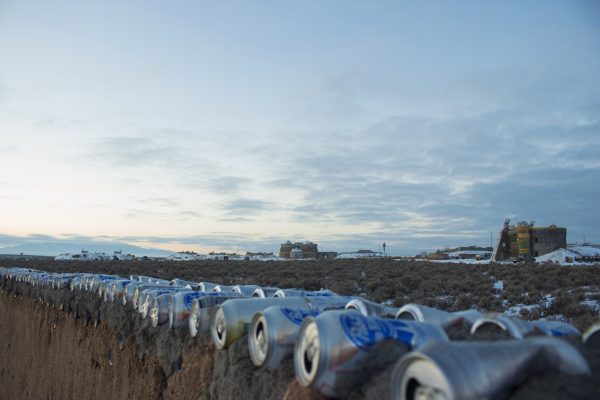
I wasn’t worried about running out of water over the weekend and I assumed that the solar panels would convert enough sunlight to keep my phone and laptop charged.
I did wonder though, if there would be enough blankets to keep me warm. I heard that temperatures in the area had gone as low as -35 F, and while the forecast only showed it dropping into the low teens, I still wondered how I could possibly stay warm.
After checking in, we made our way down to the Picuris Earthship with Ryan Halpin, our guide who is building his own “Bachelorship”.
He gave us a tour and showed us how to use the ship during our stay. He opened the front door and lead us into the garage where, unknown to me at the time, a little pond with fish was cleaning water that had previously been used in the house.
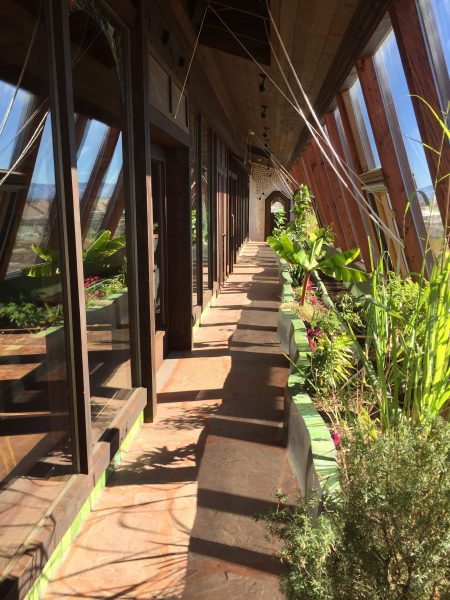
My fears of freezing were immediately quelled as we made our way into the main part of the house.
A long hallway stretched out spanning the entire front of the house. The wall to the outside was made entirely of glass and let light from outside shine in turning the hallway into a long greenhouse.
Built-in planters snaked along the wall, filled with a variety of plants. A small banana tree stuck out as an impressive feat for the semi-arid climate in Taos.
The check-in guide brought us through all the rooms in the house, showing us how we could open vents from the main rooms to the greenhouse hallway to heat up the house.
Additional vents that led out through the back wall and earth to the outside could be opened to cool the house, a feature that we wouldn’t likely need in December, but would be useful in July.
Ryan showed us the water board that filtered the rain water to different levels according to how it would be used.
There was one filter that purified the water to drinking standards and another filter that purified it to showering and washing standards.
Each sink in the house was equipped with two faucets, one for drinking and another for washing your hands or doing the dishes.
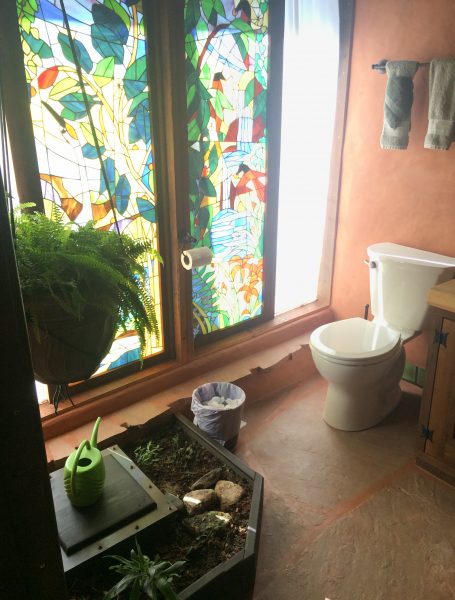
The water that flushes down the toilet isn’t the filtered rain water.
Instead, water that has already been used at the sink runs through a purifying system of the plants in the greenhouse.
Unlike a typical house, an Earthship isn’t flushing perfectly good drinking water down the toilet.
Throughout the house, there are lights just like a normal house, though during the day you hardly need to flip a switch because so much light is let in from outside.
The solar panels on the roof collect the light from the sun and convert it into energy to be used in the house.
The energy is stored into a battery bank in the garage. All appliances in the house are energy efficient and they ask guests to not use hair-dryers and other energy hungry devices.
As we finished our tour of the Earthship, I was awestruck with how innovative this building was. One, it produces all the water and electricity needed to live comfortably.
Two, it provides a source of home-grown foods. Best of all, it does all this discreetly. If I hadn’t been told about all its functions, I would have thought it was just a fancy house with a greenhouse attached.
It combines utility and function into an elegant and sustainable atmosphere.
I spent the rest of the evening saying, at an annoying frequency, “I can’t believe how incredible this place is.”
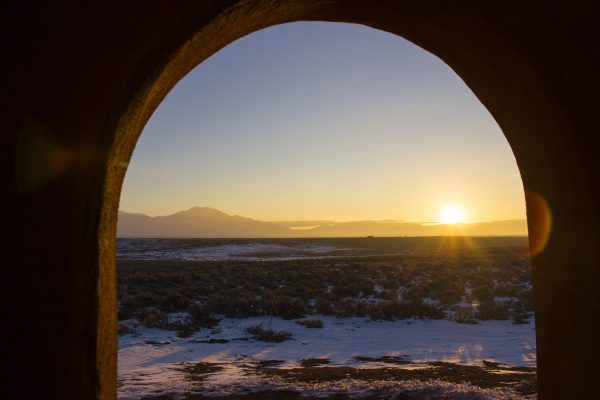
The next morning, we took advantage of not being in a hotel and made breakfast on the range in the Earthship.
Our home-cooked bacon and egg breakfast was cooked with one of the few things the Earthship didn’t directly provide us with – gas.
Though only a small amount of gas is used in cooking and it’s nothing compared to what a house would use for heat, it is worth noting that it still uses a small amount.
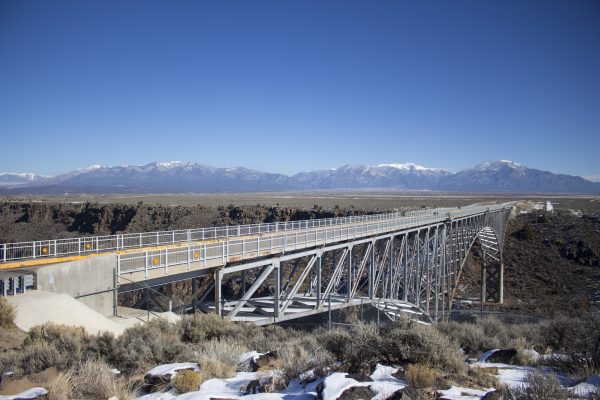
A View of the Rio Grande Gorge
It would have been easy to spend all day relaxing inside, but the outdoors was pouring in through the massive windows beckoning us out to explore.
After driving over the Rio Grande Gorge the previous day, we were eager to get a better look.
Just down the road from the Greater World Community, seemingly out of nowhere, the earth opens and the giant crevasse carved by the Rio Grande spans out into the distance.
Fences line the edge and offer a little peace of mind when you look into the depths below, but vertigo still plagued my girlfriend as we walked out onto the bridge.
She grabbed hold of me for reassurance and fought her fears for the sake of the view.
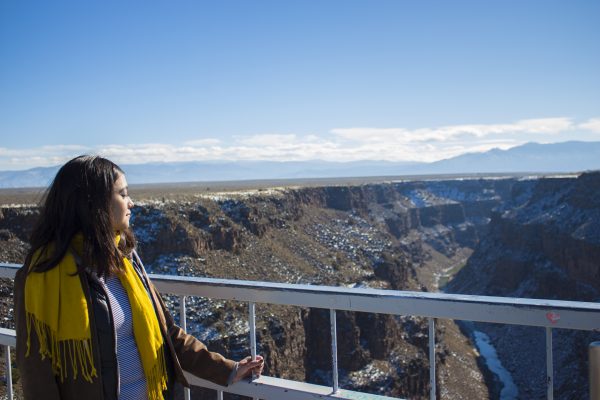
Local vendors parked their cars and trucks next to the bridge and set up tables filled with Native American jewelry, art, relics, and other knick-knacks.
We stopped by to admire the assortment of crafts and talk with the locals. After a few friendly conversations and a ring purchase later we decided to delve further into the Native American culture and head to the Taos Pueblo.
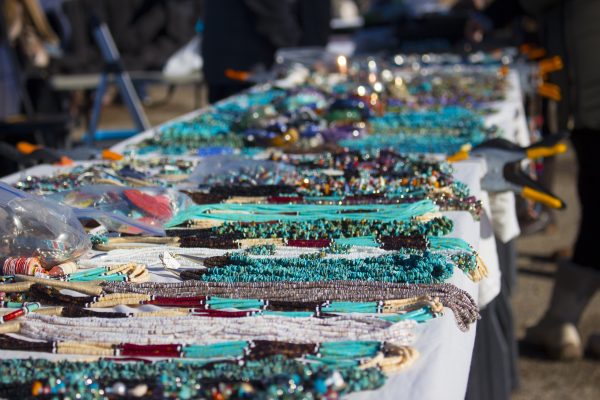
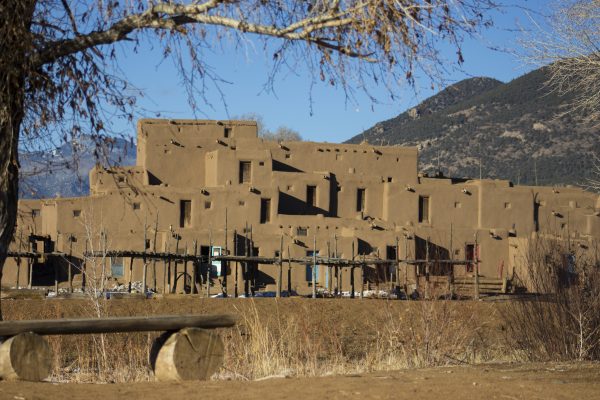
Taos Pueblo: A Trip Into the Past
We headed over the bridge and out to the Taos Pueblo without really knowing what was ahead.
I hadn’t done much research other than I knew it was the oldest continually inhabited dwelling in the United States.
Small green road signs pointed us in the right direction, designating the way to the pueblo. We found a parking spot in a muddy lot and made our way to the registration check-in that another sign told us was mandatory.
After paying a small fee, the attendant said we were free to wander through on our own or if we preferred we could wait for the guided tour.
The next tour didn’t begin for 30 minutes, so we planned to wander through the adobe structures on our own, trying to fathom what life was like here a thousand years ago.
Most of the houses were still devoid of running water and electricity. Smoke poured out of some of the chimneys of the occupied homes and one woman was sweeping off her roof.
Like we had gone back in time, it was a life without the modern conveniences that most of us have come to take for granted.
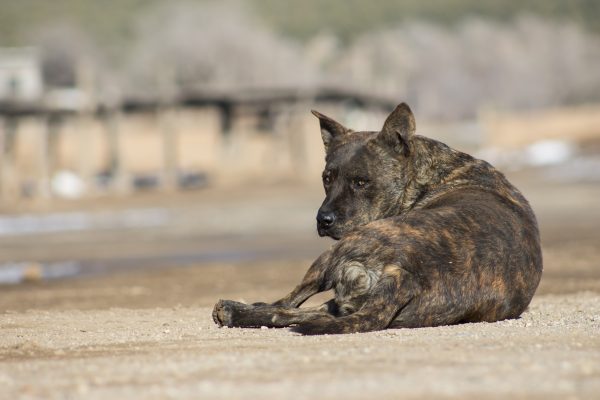
Engrossed in our surroundings, the time slipped by and we nearly missed the next tour. We made it back to the guide just in time and found out there was no one else on the tour.
We had our own personal guide who led us around and told us about the history of the town.
The multi-story adobe buildings have stood the test of time, though it wasn’t always easy. Our guide said there had been multiple wars on the pueblo and its people.
Attacks came from the Spanish and other Native American tribes, as well as the United States government.
One of the biggest successes for the people here was when former President Nixon gave back the land that held their sacred Blue Lake. The land had previously been taken by Theodore Roosevelt.
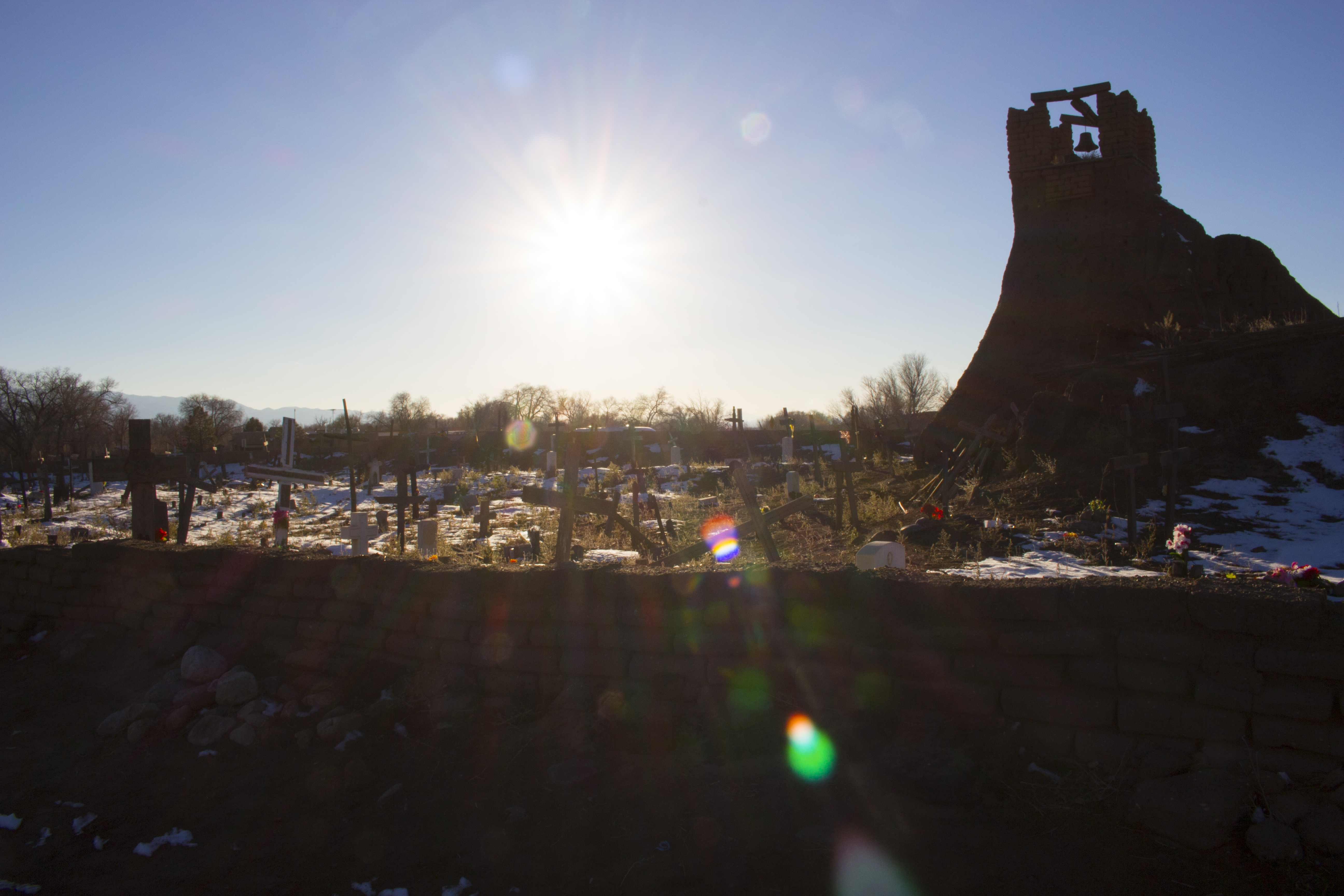
After the tour, we wandered through the alleys of the adobe buildings heading for the ones with smoke coming out of the top.
Some of the inhabitants opened their homes for visitors to come in and see the goods they were selling and get a glimpse into the ancient lifestyle. Breakfast had long since worn off by the time we found a home that was selling homemade food.
We jumped at the opportunity and had a delicious bowl of chili and some fry bread. The one-room shop was manned by a single woman.
A tiny kitchen was nestled in the far corner and a counter separated it from the lone table where we took our lunch. We talked with the shopkeeper about her family.
She told us in a worried voice how many of them had gone to North Dakota to protest the pipeline.

Like the protesters in North Dakota, water is important to the people of the Taos Pueblo because their drinking water comes from a stream. We thanked her for the meal and the conversation as we headed out.
On our way back, I couldn’t help but think of the similarities between the pueblo and the Earthship community. Both were off the grid. Both held a high respect for nature.
The Earthships felt like the modern-day pueblo. Maybe the Earthship community will still be around in another thousand years.
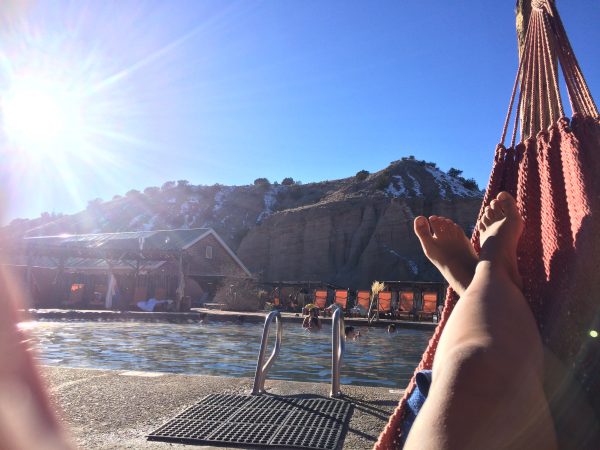
Laying in a hammock poolside at Ojo Caliente. Photo by Gabriela Rodriguez.
A Relaxing Finish
The following day we said our goodbyes to the Earthship. The home had taken care of us and it felt like we were saying goodbye to a good friend as we closed the garage for the final time.
We made our way south to the Ojo Caliente Mineral Springs where we had a day of relaxation and soaking in the geo-thermal mineral waters.
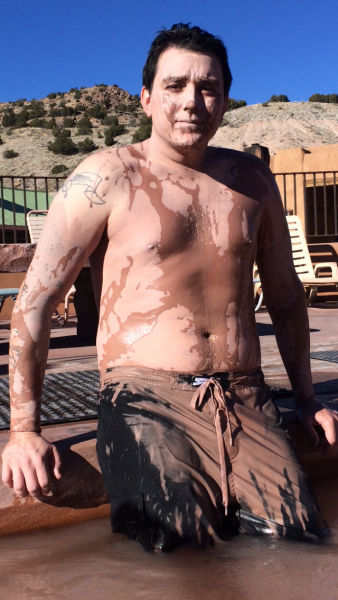
I have always felt that the last day of a trip gets spoiled by thoughts of going back to reality.
That doesn’t happen when you are too busy letting your troubles melt away in one of the many soaking pools.
There are four different types of spring waters at Ojo Caliente Mineral Springs, each boasting different benefits. My personal favorite was the mud bath.
Mud water flows out of the four spouts. You can cover your body with it before rinsing off in the mud bath.
It was a chilly day, but after cooking in the pools of hot water I hardly noticed.
Private soaking tubs are also available for private relaxation.
On extra cold days, tell the staff you would like the fire to be lit before you check in for the private soak. This will provide the added warmth of the fire next to you.
As a last-ditch effort to avoid going back to reality, I spent 80 minutes under the hands of the talented Catherine Borner getting an “Ancient Echoes” massage at Ojo Caliente Mineral Springs.
I drifted in and out of consciousness in a state of pure bliss as she massaged my head and shoulders. The time disappeared quickly, as did all my stress. It was the perfect way to end the weekend.
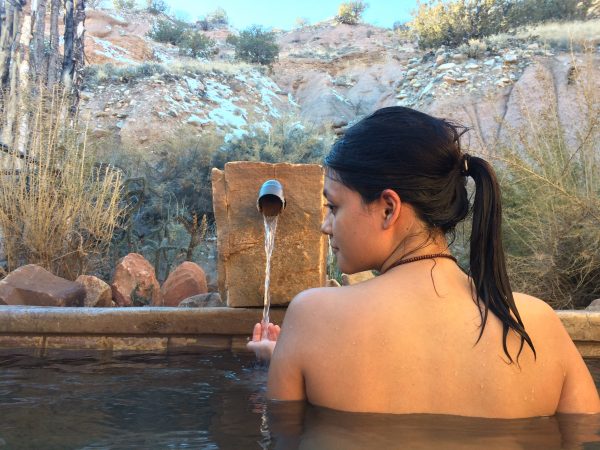
If You Go to Taos:
Earthship Biotecture
575-613-4409
[email protected]
earthship.com
Taos Pueblo
575-758-1028
taospueblo.com
Ojo Caliente Mineral Springs Resort & Spa
505-583-2233
[email protected]
ojospa.com
- Life of a Champion: Exploring the Muhammad Ali Center in Louisville - April 19, 2024
- What It’s Like to Live as an Expat: Lake Chapala, Mexico - April 18, 2024
- Top 5 Spots for Stargazing in North Carolina - April 17, 2024
